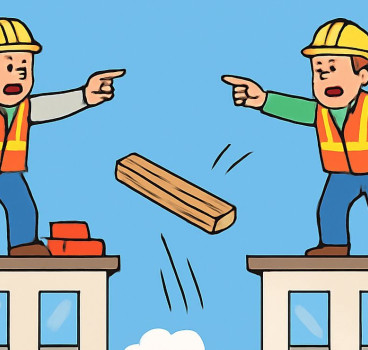Sprinkler thresholds - leading or lagging
In the realm of fire
regulation, in 2020 the UK emerged as a leader in Europe by reducing the height
threshold guidance for sprinklers in new-build residential buildings to 11m.
However, when it comes to fire safety guidance in warehouses, the situation is
quite different. The UK is lagging far behind many of our European neighbours
propping up the bottom of the table with regulatory guidance only calling for
sprinklers in warehouses that exceed an enormous 14- 20,000m2 area.
When
you consider the importance of business resilience and continuity, the far
smaller guidance threshold areas in Europe mean that these markets are far
better prepared to recover from devastating fires that threaten their
businesses and economies, writes Alan Brinson, Executive Director at European Fire Sprinkler
Network.
Since the tragic events of the Grenfell Tower fire there has increased attention to the benefits and use of sprinklers in residential buildings as a key fire safety measure. The recent changes to the regulations in Scotland and regulatory guidance in England have formalised that position. During 2023 Northern Ireland consulted to follow this path which will see a common approach to sprinklers in residential buildings across the UK for such buildings over 11m. In the Republic of Ireland, the fire safety guidance was changed to require sprinklers in residential buildings over 15m. These moves are a significant change that has clearly placed fire sprinklers as a key element in the guidance for fire safety.
Comparing the situation across Europe, one might be surprised to discover that many leading countries only require sprinklers in flats at significantly greater heights. In Sweden, the threshold is set at 50m (16 storeys), while Germany mandates them for blocks higher than 60m (20 storeys). Spain takes it even further, with a requirement at 80m (26 storeys), while France sets the bar at 200m (there are no blocks of flats this high in France). Notably, Italy does not have any height requirement. This positions the UK as a leader in employing automatic fire sprinkler systems to safeguard occupants in residential buildings.
However, when we shift the focus to single-storey industrial buildings like warehouses, we observe an opposite trend. In many respects, fire is fire. Similar fuel loads necessitate comparable amounts of water to extinguish or control the flames. In Europe, sprinklers are called for above warehouse sizes ranging from 4,000 to 5,000m2, while sometimes even smaller compartments attract guidance for sprinklers triggered by the height of storage arrays. Recently the Republic of Ireland moved their guidance to reduce the threshold to 1,000m2 for warehouses with storage over 7.5m. Astonishingly, in the UK, this threshold stands at a much larger range of 14,000 to 20,000m2.
The remit of British Fire Safety Building Regulations (FSBR) is like that of the rest of Europe with a focus on ensuring the safety of occupants in the event of fire, access for firefighters and limiting the spread of fire between buildings. Interestingly, our European counterparts implement controls on warehouse building compartment sizes precisely for the reasons of ensuring escape from the building, limiting fire spread and aiding firefighting. This leads to the provision of sprinklers in larger compartments. It begs the question whether the UK possesses superior knowledge in this regard.
To illustrate the point, one of the largest warehouse fires in Europe occurred in the UK in May of this year. A 33,000m2 warehouse burnt down in Cannock. Despite the intervention of 10 crews of firefighters from three counties, they were unable to stop the fire spreading to the extent of the building. The smoke from the fire was visible from 20 miles away. The fire led to the disruption to the local industrial estate neighbours who were either evacuated or unable to access their sites.
The warehouse did not have any form of sprinkler system installed. Reportedly the building had been sub-divided to meet regulatory guidance. One has to ask how would that have helped to control the fire? Unless caught early, such high storage arrays generate fires that can overwhelm the structure and are beyond the ability of the fire and rescue service to extinguish. Trying to stop the progress of the fire without the early intervention of water means a compartment would have to resist a substantial fire but would still require substantial fire and rescue service resources.
It is for this reason that the presence of sprinklers makes sense. In the majority of European countries this warehouse would have had to have sprinklers installed to mitigate such a situation and aid the fire and rescue services. It is notable that the recent update to the National Fire Chiefs Council (NFCC) position statement on sprinklers calls for the reduction of the unsprinklered compartment size of warehouses to 4,000m2.
The UK is taking great strides in making sprinklers the norm for fire safety particularly in places where people live, in public spaces and in tall buildings. The challenge of fire in large compartment warehouses is obvious with sprinklers being a strong solution for such buildings, and they should be used more in the UK. It continues to be that we and our closest neighbours can mutually learn a lot.
For more information about the BSA visit the www.business-sprinkler-alliance.org
Additional Blogs

Construction’s obsession with blame instead of learning
Construction is one of the most technically advanced industries in the built environment, yet culturally it often behaves like one of the least reflective. When things go wrong and they frequently...
Read moreHow risk Is routinely pushed down the supply chain
Risk is an unavoidable part of construction. Every project involves uncertainty around ground conditions, weather, design coordination, procurement, labour and programme. Yet while risk is inherent,...
Read more

What if Building Control went fully digital?
Building control governs structural integrity, fire protection, energy efficiency, accessibility and countless other aspects of design and construction. Historically, this process has been highly...
Read more